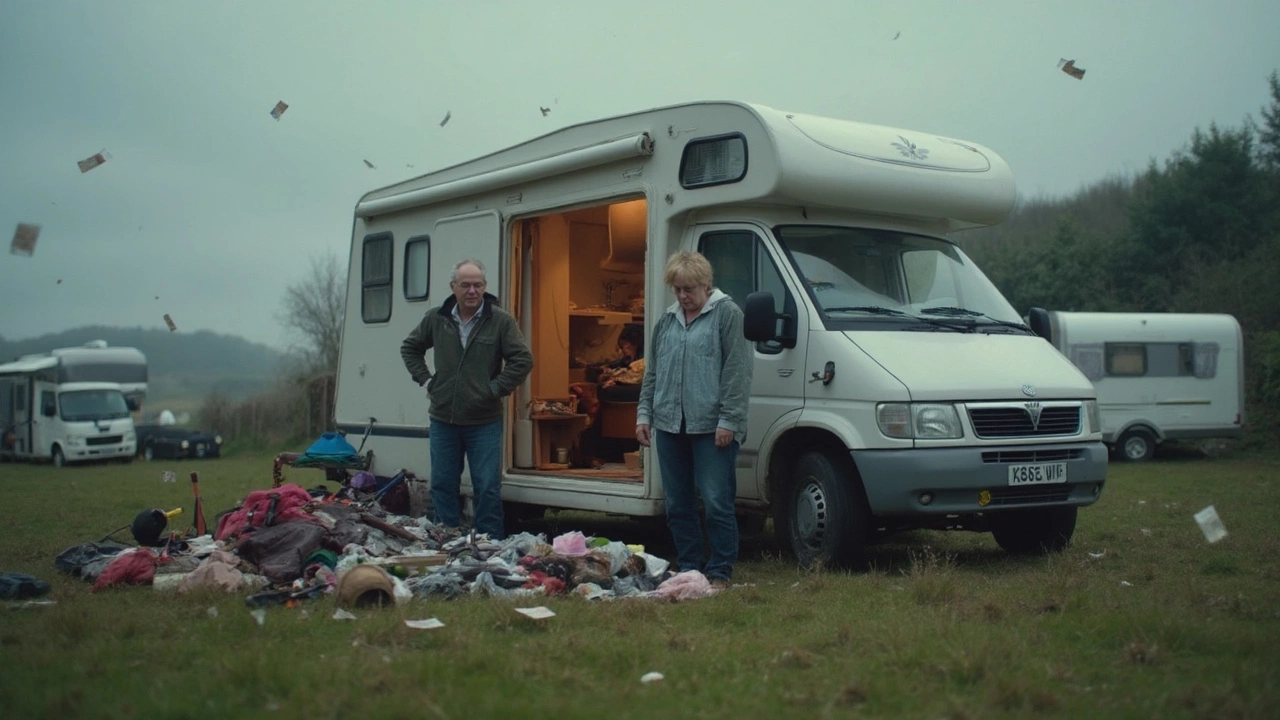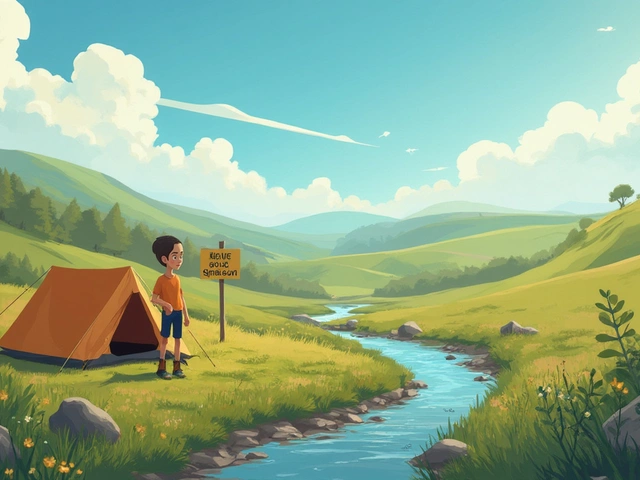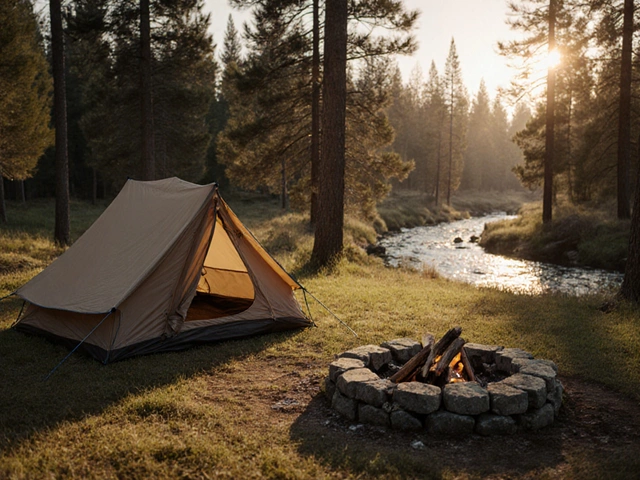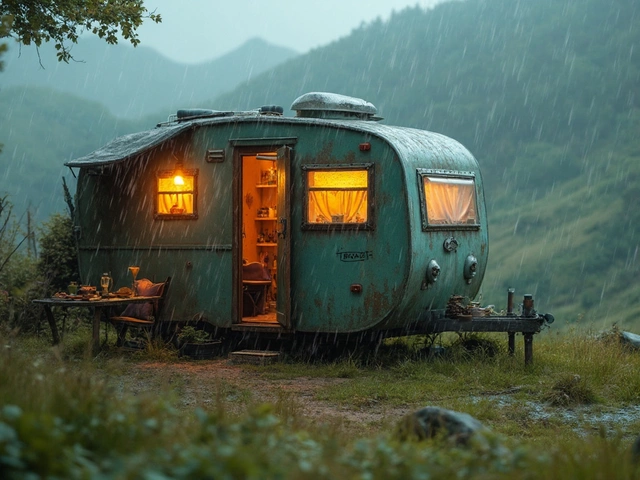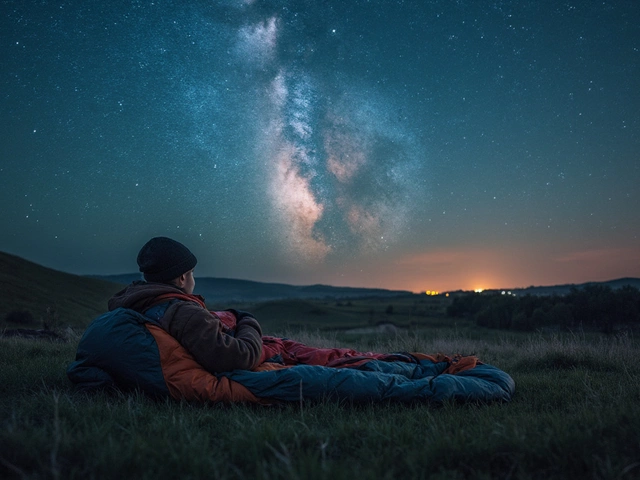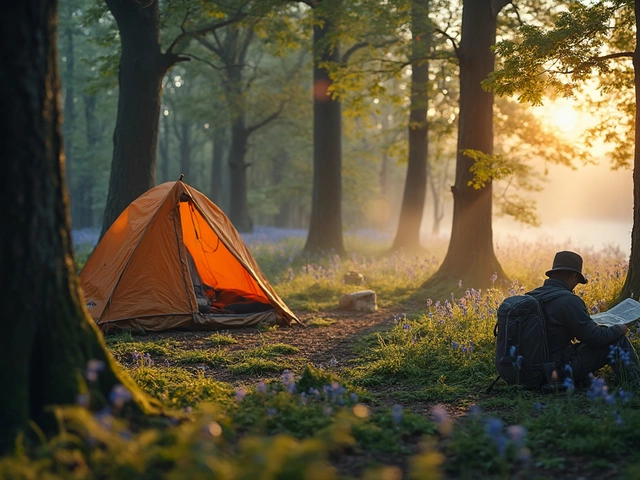Ever caught yourself daydreaming about selling everything, grabbing an RV, and letting the open road be your permanent address? Before you cash in your 401(k) and wave goodbye to your mailbox, you might want to pump the brakes. There’s a side of RV living nobody puts on their Instagram highlight reel. Some of these realities sting harder than a mosquito in a Florida swamp.
Space Isn’t Just Limited—It’s Claustrophobic
Let’s be real: If you’re used to even a modest apartment, an RV feels like moving your life into a walk-in closet. Most RVs offer between 150 to 400 square feet. Even the so-called 'luxury motorhomes' clock in smaller than a New York studio. You’ll quickly learn that, after a few weeks, every item needs a purpose—or it needs to go. Clutter isn’t just unsightly in an RV, it’s dangerous. Stuff left unattached can become a projectile the moment you slam on the brakes.
Privacy is practically non-existent. Unless you’re solo, you’ll share every inch with your travel partner(s). Forget about closing a door and cooling down after a spat—many RVs barely have doors inside at all. Want to exercise? Good luck squeezing a yoga mat between the dinette and the closet. Hosting friends? Maybe two, if you like each other a lot.
Even basic daily rituals feel awkward. Showering turns into a gymnastics routine. Bathrooms are tiny. Water is limited (and hot water, especially so). Cooking? Let’s just say you’ll develop new appreciation for one-pot meals. After a few rainy days inside, cabin fever is not just a figure of speech; you’ll crave a change of scenery—or at least a bigger couch.
If you have hobbies or work from the road, you’ll have to get creative. There’s no home office, art studio, or home gym. You’re living, working, relaxing, and sleeping in a space smaller than most people’s garages. For those who need personal space, full-time RVing can feel suffocating.
And no matter how many times you rearrange, there’s always something in the way. Storage hacks and folding furniture help, but won’t magically make the place bigger. Every time you buy something new, something else has to go. Over time, this forced minimalism can become exhausting—especially when essentials go missing in all the tiny cabinets and under-seat bins.
Tip: Take a long weekend in a rented RV before committing. See how you handle the tight quarters, especially if you’re sharing them with others for more than a couple of days.
The True Cost of Owning and Maintaining an RV
That Instagram shot of the RV parked near a national park lake? Looks free and easy. Reality check: RVs are expensive. New Class A rigs easily hit six figures. Even used travel trailers often cost more than a small car. Financing, of course, means paying interest. But the bigger costs come after you drive off the lot.
Depreciation is ruthless. New RVs can lose up to 30% of their value in the first year. And unlike a house, your RV won’t appreciate or pay itself off—just lose value with every mile you rack up. Next comes insurance. RV policies cost more than car insurance—especially if you live in it full time. Registration fees are higher, too. And repairs? Don’t even get me started.
RVs are complex beasts: you’re wrangling a house and a vehicle, all jammed together. Think propane, water heaters, waste tanks, A/C, electrical systems, appliances, slide-outs... and every part of it needs regular upkeep. Something will break—a lot. And repairs can be shockingly expensive, especially if you’re stranded away from your usual mechanic. Just fixing a slide-out can cost thousands.
Don’t forget fuel. RVs guzzle gas or diesel—expect 7 to 13 miles per gallon if you’re lucky. With today’s fuel prices, a cross-country trip burns through cash faster than your campfire eats marshmallows. Tires don’t last long, either—replacing six RV tires can easily run more than $2,000. Then there’s campground fees. Even the most basic site usually costs $25 to $50 a night. Want full hookups? More like $70 to $120, especially close to tourist hotspots in the summer. If you’re not boondocking (camping off-grid for free), monthly costs can rival renting a small apartment.
Finally, most people end up buying expensive extra gear: generators, solar panels, surge protectors, sewer hoses, leveling blocks, and more. The add-ons add up quick. Trying to skimp usually means you're dealing with breakdowns or cold nights without heat. Even RV-friendly repairs—simple stuff like sealing a roof or adjusting a slide-out—can chew up your weekends and your wallet. RV ownership is a constant balance between adventure and maintenance headaches.
Tip: Create a realistic budget that includes insurance, campsite fees, regular maintenance, repairs, and upgrades—not just the RV loan payment. Double it for the first year; something big will almost certainly go wrong.
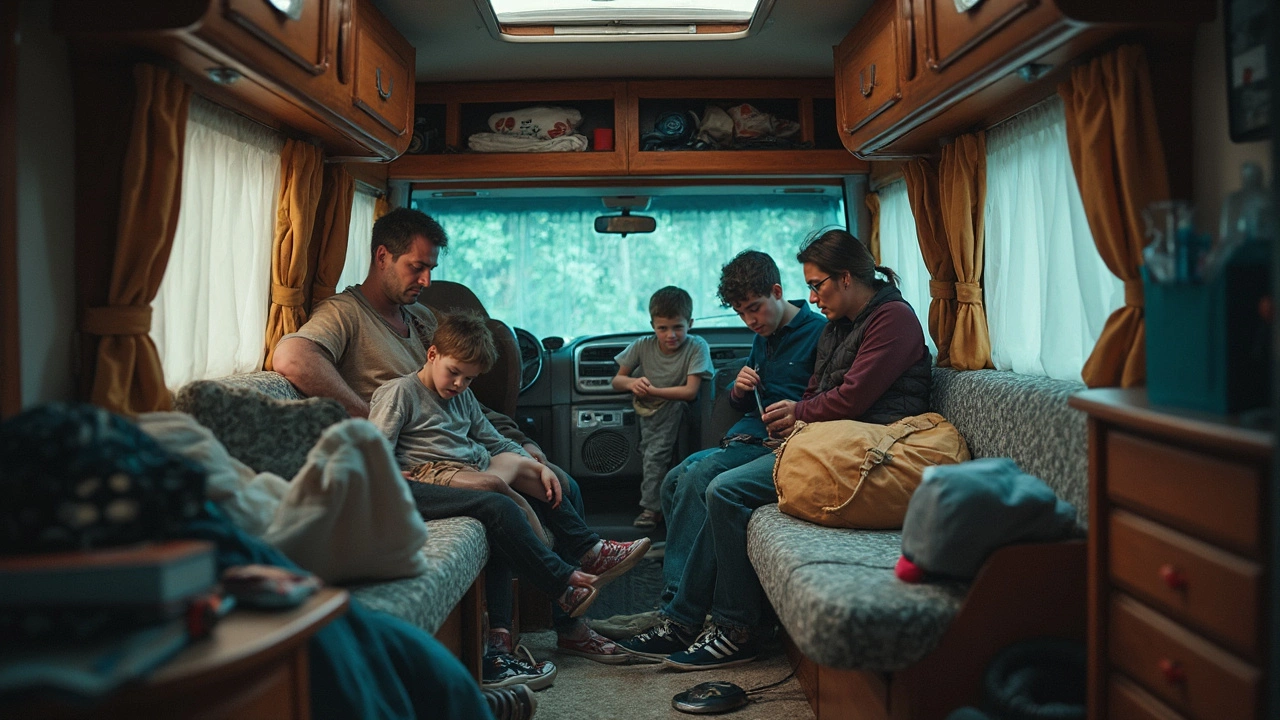
Road Life Isn’t All Freedom—Logistics Can Be a Nightmare
The idea of driving anywhere, anytime? It’s addictive. But keeping an RV on the move is its own odd job. First off, finding a safe, legal place to park isn’t as easy as it sounds. National parks, for example, often book up months in advance. Many city ordinances ban overnight parking, making spontaneous travel feel more like a scavenger hunt than an adventure. Stealth camping is risky, sometimes earning you a knock from the police or a ticket (or both).
Then there’s navigating narrow roads, weight limits, tricky gas stations, and low-clearance bridges. One missed sign can mean backing up into traffic, which is stressful and dangerous. City parking? Forget about it. Even big grocery stores can become mini-nightmares when your home is 35 feet long and 10 feet tall. Eventually, you learn to check Google Maps in satellite mode and read every road review you can get your hands on.
Bigger RVs face more restrictions. Many scenic roads ban vehicles over a certain length or weight. Coastal hairpins, downtown streets, and mountain passes might suddenly be off-limits. Planning a route means hours of research, not just plugging in your destination and following GPS. One wrong turn, and you’re stuck making a 50-point U-turn on a two-lane rural road, praying no one comes speeding around the bend.
Waste management is unavoidable. Every RV needs its black (sewage) and gray (sink and shower) tanks emptied regularly. It’s not glamorous, and it gets nasty fast if you skip routine cleaning or make mistakes (ever seen an RV ‘poopsplosion’? Trust me, don’t Google it while eating). Fresh water tanks need refills, too, and not everywhere has reliable hookups. If you’re boondocking, running out means a trip to civilization—sometimes hours away. Add in laundry, mail, and grocery shopping, and suddenly your paradise-on-wheels feels like a never-ending list of chores.
Staying connected on the road can be tough. Rural or mountainous locations often have unreliable cell service and almost never have good Wi-Fi. If you work remotely, this throws a major wrench in your plans. Unlimited data cell plans are expensive and can get throttled when you hit usage caps. Even premium 'RV park Wi-Fi' is usually barely good enough for email, never mind streaming or video calls. So much for sending that drone footage of your epic sunset to YouTube.
Tip: Plan routes and reservations ahead, especially in busy seasons. Invest in a good GPS made for RVs (they warn of low bridges, steep grades, and propane-restricted tunnels) and check campground and road reviews regularly. Always have a backup plan if your spot falls through.
Home Comforts Get Sacrificed—Sometimes More Than You Realize
RV dealers love to talk about all the luxuries on board—but the truth? You’ll leave plenty behind. First, climate control is tricky. RVs get cold fast and turn into saunas in the sun. Even with fancy heating and A/C, insulation is thin, and you’re fighting the weather non-stop. Ever tried sleeping during a thunderstorm in a metal box? It’s loud. And wind gusts feel like getting rocked by a giant.
You’ll likely face plenty of power anxiety. Off-grid means no electric oven, no long microwave sessions, and no hairdryers. Conservation becomes second nature—charging small devices is no problem, but running the A/C for hours can drain batteries or cost a fortune in generator fuel. Solar power helps, but only if the sun cooperates.
RV bathrooms aren’t just tiny—they need babying. The toilet uses far less water than you’re used to, and the shower lasts about three minutes before it gets icy. Forget soaking in a tub. Plus, 'RV toilet paper' is a real thing (regular stuff clogs the holding tank). Hot water is always in short supply. Many end up becoming connoisseurs of campground bathhouses to get a 'real' shower now and then.
Appliances are smaller, simpler, and break more often. Forget about hosting Thanksgiving. Most ovens fit a frozen pizza—barely. The fridge is half-size at best, and some run on old propane systems with moods of their own. Laundry? Expect lines at the campground laundromat or regular trips to town. No washer/dryer combo unless you buy a very expensive and very large RV.
Security brings new stresses. RVs get targeted for theft; they aren't built for safety like houses. Most doors and windows are easy to jimmy open. Leaving your rig alone in remote areas is always a gamble. Tied to that: weather disasters. Hail, heavy winds, floods—RVs don’t hold up like brick houses. A bad storm can mean a trip to the repair shop or the insurance agent.
Loneliness can sneak up, too. New places are exciting, but always being the new person at a campground means friendships can stay shallow. Community is hard to build when neighbors change weekly. And living far from friends, family, and steady healthcare or services becomes tough after the excitement fades.
Tip: Try a long trip before going all-in, and be honest about what comforts you really need to be happy. Investing in comfort upgrades (better mattress, thicker curtains, portable A/C or heater) can help, but nothing replaces the feeling of a true home base.
